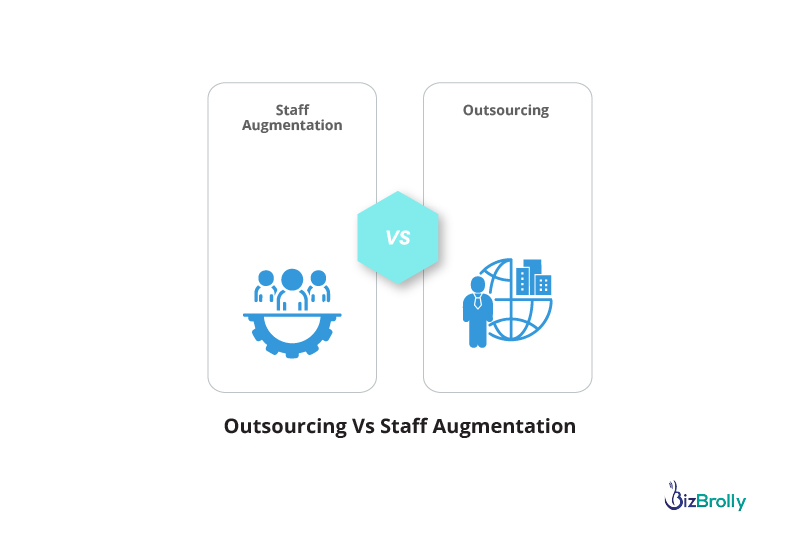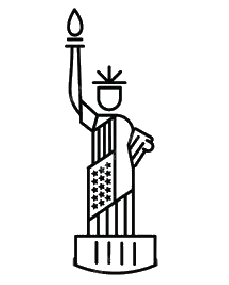Staff Augmentation vs Outstaffing vs Outsourcing: Which Development Model Is Right for You?


Choosing between outsourcing and staff augmentation is a decision many businesses face when looking to scale, optimize operations, or fill specific skill gaps. Both models offer unique advantages, but understanding how each can impact your business is crucial for making the right choice. Outsourcing involves partnering with external firms to handle entire projects or business functions, often leading to cost reductions and access to specialized expertise. On the other hand, staff augmentation brings in skilled professionals to temporarily supplement your existing team, allowing for more control and flexibility. The decision between outsourcing and staff augmentation depends on factors like project complexity, desired level of control, and budget. Each model has its own set of benefits and challenges, making it essential to evaluate which best aligns with your company’s goals.
This blog will explore the key differences between outsourcing and staff augmentation, highlight their benefits and provide insights on how to select the best option for your business. By the end, you’ll have a clearer understanding of which approach is right for achieving your objectives and supporting long-term growth.

Outsourcing involves hiring external vendors to handle specific business functions, allowing companies to reduce operational costs and focus on core competencies. It provides cost efficiency by eliminating overheads like salaries and infrastructure, while offering access to specialized expertise in areas such as IT, customer support, and marketing. Outsourcing enables rapid scaling without long-term employee commitments. However, it also presents challenges, including potential loss of control, communication barriers, and quality inconsistencies. To mitigate risks, businesses must carefully evaluate outsourcing partners and establish clear expectations for successful collaboration and high-quality outcomes.
Staff augmentation is a flexible model where businesses hire external professionals to work alongside in-house teams, filling skill gaps or meeting short-term demands without long-term commitments. This model is ideal for specialized roles like software developers or IT experts. The key benefits include flexibility and scalability, as companies can easily adjust their workforce based on project needs. Unlike outsourcing, staff augmentation allows businesses to maintain control over project management and quality. However, challenges include cultural integration and the need for effective management of temporary professionals to ensure smooth collaboration with in-house teams.
Both outsourcing and staff augmentation provide businesses with strategic advantages that can help them grow, innovate, and stay competitive in the market. However, the need for these models arises from different business challenges and opportunities.
Outsourcing is typically used to optimize operational efficiency and reduce costs by delegating non-core functions, such as customer support, IT management, or accounting, to external experts. This allows companies to focus on their core business processes and scale operations quickly without the need to hire full-time staff. It’s especially beneficial for small businesses or startups that need to expand quickly without investing heavily in permanent teams.
Staff augmentation, on the other hand, is ideal for businesses that need specialized skills for specific projects or temporary demands. For example, a company working on a software development project may require additional developers with expertise in a particular programming language. Staff augmentation offers flexibility, enabling businesses to quickly adjust their workforce size and skill set without lengthy hiring processes. Both models help companies address skill shortages, control costs, and remain agile in a rapidly changing market.
While both outsourcing and staff augmentation aim to bridge skill gaps and optimize productivity, they function quite differently in terms of execution, management, and business goals. Understanding these differences can help you choose the right approach for your organization.

The global business environment is evolving rapidly, and so are the trends in how companies access tech talent and services. Both outsourcing and staff augmentation are witnessing major shifts as businesses strive for agility, cost-efficiency, and innovation.
Businesses are no longer relying on a single approach. A growing number of companies now combine outsourcing for full-service operations with staff augmentation to address specific project needs. This hybrid model provides the flexibility to scale while keeping core functions in-house. It’s especially popular among tech-driven businesses managing dynamic workflows.
The era of choosing vendors solely based on price is fading. Organizations are now prioritizing quality, domain expertise, and reliability over the cheapest options. Decision-makers understand that a slightly higher investment often results in fewer delays, better deliverables, and long-term cost savings. This shift reflects a maturing approach to external partnerships.
With communication and time zone challenges in offshore models, many companies are exploring nearshoring and onshoring. Working with vendors in similar time zones improves collaboration and speeds up project cycles. It also allows for better cultural alignment and easier management of quality standards.
The demand for highly niche and advanced skills—such as AI/ML, DevOps, blockchain, and cybersecurity—is at an all-time high. In many cases, internal hiring can’t keep pace with these fast-evolving tech requirements. Staff augmentation fills this gap efficiently, allowing businesses to access cutting-edge talent without lengthy recruitment cycles.
Today’s outsourcing and staff aug vendors are offering more agile contracts and billing models. From time-and-materials to outcome-based agreements, clients have more options tailored to their project scale and risk tolerance. This flexibility supports startups, SMEs, and enterprises alike in adapting to uncertain or fast-changing business environments.
Choosing the right partner is crucial to the success of your outsourcing or staff augmentation strategy. A poor choice can lead to communication gaps, delayed deliveries, or security risks. Here are key factors to guide your decision:

Look for a partner with proven experience in your required technologies and domains. Check their portfolio, client testimonials, and case studies. A reliable partner should be able to showcase real-world results and successful project deliveries.
Strong communication is essential—especially when working across different time zones. Ensure the vendor’s communication style aligns with your company’s workflow. A good cultural fit also promotes smoother collaboration and fewer misunderstandings.
When outsourcing or augmenting tech roles, you often share sensitive data. Make sure the partner follows robust data protection, cybersecurity, and compliance standards (e.g., GDPR, ISO certifications). Ask about their policies and infrastructure for securing client information.
Choose a partner that can scale their team up or down based on your project needs. Flexibility in engagement models—such as part-time or full-time resources, short- or long-term commitments—is a key advantage for evolving businesses.
A trustworthy partner provides a clear and detailed pricing structure upfront. Avoid firms that offer lowball quotes without explaining their service breakdown. Ask for estimates, billing models, and any additional charges to avoid surprises later.
Both staff augmentation and outsourcing have their own set of advantages. Here’s a breakdown of the key benefits each model offers:
Staff augmentation allows businesses to quickly access highly specialized talent without going through a long recruitment process. This is especially useful when a company needs specific expertise for a limited time, ensuring faster project completion.
Since augmented staff work as part of your existing team, they integrate seamlessly into your company’s culture and workflow. This ensures that they can contribute effectively without disrupting team dynamics or productivity.
Staff augmentation helps businesses avoid the overhead costs of full-time hires, such as recruitment, benefits, and training. You only pay for the exact skills and resources you need, which is ideal for short-term or specialized projects.
With staff augmentation, you can scale your workforce up or down depending on project requirements. This flexibility is valuable when the workload fluctuates, allowing you to adjust quickly without being tied to long-term hiring commitments.
Outsourcing provides access to end-to-end solutions and industry experts who specialize in specific areas, such as IT, marketing, or customer service. This enables businesses to focus on their core competencies while relying on experienced partners for complex functions.
Outsourcing can reduce operational costs, especially when partnering with offshore vendors. Companies save money on hiring, training, and infrastructure costs, while still gaining high-quality services at a lower cost than in-house resources.
By outsourcing non-core functions, businesses can direct their time, energy, and resources towards key areas that drive growth and innovation. This allows internal teams to focus on strategic objectives and core business priorities.
Outsourcing mitigates the risks associated with undertaking complex or unfamiliar projects. Experienced vendors bring their expertise to ensure smooth delivery, reducing the likelihood of errors and delays.
When deciding between staff augmentation and outsourcing, businesses should evaluate several key factors to determine which model aligns best with their needs. Here’s what to consider:

If the project requires long-term, comprehensive solutions, outsourcing may be the better choice. Outsourcing is ideal for projects that need full-scale management and execution, while staff augmentation works best for short-term, specific tasks or when filling a gap in your current team.
Staff augmentation gives businesses more control over the workflow, team management, and decision-making. If maintaining direct oversight and integration with the internal team is a priority, staff augmentation is the preferred model. In contrast, outsourcing typically means relinquishing control to the external partner who manages the project independently.
Outsourcing is best for projects that require specialized, end-to-end expertise or access to resources not available in-house. On the other hand, staff augmentation provides businesses with immediate access to specific skills needed for ongoing projects or filling temporary gaps.
While both models offer cost-saving benefits, outsourcing can often reduce operational costs through offshoring and eliminating the need for internal infrastructure. However, staff augmentation may offer more cost efficiency for short-term or smaller-scale projects where you only need a few specialized experts for a limited time.
If your project is likely to experience changing requirements, staff augmentation offers flexibility, allowing you to scale your team quickly based on project needs. Outsourcing, on the other hand, might involve more rigid contracts and may not provide the same level of adaptability, depending on the scope of the agreement.
Selecting the right model—staff augmentation or outsourcing—depends on your unique business needs. To ensure a smooth decision-making process, here are some best practices to follow:
Before deciding, clearly outline your project’s scope, timeline, and desired outcomes. Understand whether you need specialized skills for a specific task or a complete end-to-end solution. For projects requiring continuous involvement and close integration, staff augmentation is typically a better fit. For those needing a full-service solution from start to finish, outsourcing might be the right approach.
Take an honest look at your in-house capabilities. If you already have a well-equipped team but lack certain specialized skills, staff augmentation can bridge that gap. However, if your team is already stretched thin or lacks expertise in a particular area, outsourcing a function or entire project can help alleviate the burden and ensure high-quality results.
Do you want to maintain direct control over your project and integrate external expertise into your existing team? If so, staff augmentation is the way to go. But if you’re comfortable handing over the reins to a specialized partner who will manage the project end-to-end, outsourcing provides that freedom.
Staff augmentation is typically more cost-effective for short-term, niche projects where you only need a few specialists. Outsourcing, especially to offshore locations, can offer significant savings on labor and operational costs but requires a larger upfront commitment. Analyze your budget, including long-term expenses, before making a decision.

If your business is growing or facing fluctuating demand, staff augmentation offers flexibility. You can scale your team quickly based on the project’s evolving needs. Conversely, outsourcing might involve long-term contracts that may limit flexibility. Choose a model that allows you to adjust resources as your business needs change.
Both staff augmentation and outsourcing come with their own unique set of challenges. It’s important to anticipate and address these challenges early on to ensure a successful engagement. Let’s explore some of the key challenges you might face with each model, along with effective solutions.
One of the major challenges with staff augmentation is ensuring that the external staff integrate seamlessly into your existing team. Without proper onboarding or communication, there can be friction between internal and external teams, leading to delays or confusion.
To mitigate this, provide thorough onboarding and training sessions. Ensure that augmented staff are familiar with your company’s culture, workflows, and business objectives. Foster collaboration by organizing regular team meetings to keep communication transparent. A project manager or team lead should act as a liaison to integrate external staff smoothly into internal processes.
Outsourcing projects entirely to an external vendor can make it difficult to maintain control over the quality of work, which may lead to misalignments with your company’s standards.
Establish clear contractual agreements that define the project scope, timelines, and quality standards. Schedule regular progress updates and milestone reviews to ensure the work is aligned with your expectations. Having dedicated quality assurance (QA) checkpoints and setting clear deliverables helps maintain oversight and accountability.
There is a risk that augmented staff may not fully understand your company’s systems, processes, and culture, leading to inefficiencies or errors.
Combat this by ensuring proper knowledge transfer from the internal team to the augmented staff. Document processes and key procedures in detail and make them accessible to the external staff. Regular training sessions can also help fill in the knowledge gaps. Additionally, appointing an experienced internal mentor for the augmented staff can facilitate smoother integration.
Outsourcing can create a dependency on third-party vendors for critical business functions. If the vendor fails to deliver as expected, it could disrupt your operations.
To reduce risks, select an outsourcing partner with a proven track record and strong references. Negotiate contracts that include performance metrics, penalties for missed deadlines, and guarantees for quality. Maintain regular communication and require progress reports to ensure the project stays on track. Backup plans, such as retaining in-house capabilities or having secondary vendors, can also help safeguard against risks.
Managing a team that includes both internal and augmented staff can become complicated, particularly if there are differences in work culture, communication styles, or experience levels.
Assign a dedicated project manager to oversee the team and ensure smooth coordination between internal and augmented staff. Establish clear roles and responsibilities and ensure that all team members, whether internal or external, are aligned with the project’s objectives. Having regular check-ins to assess progress and address any issues will help maintain smooth workflow.
Communication barriers can arise, especially if the outsourcing partner is in a different time zone or region, which could lead to missed information or delays.
Set up clear communication channels and scheduling systems to manage time zone differences. Utilize tools like project management software or communication platforms (Slack, Zoom, etc.) to keep everyone on the same page. Establish regular video calls and written reports to track progress and clarify misunderstandings. Additionally, ensure that there is a designated point of contact for both parties to avoid communication gaps.
Choosing the right staff augmentation or outsourcing partner is a pivotal decision that can significantly impact the success of your project. It’s essential to first evaluate the provider’s expertise and experience in your specific industry and the technologies you require. A provider with proven success in handling similar projects will be better equipped to address your unique challenges. Equally important is assessing the cultural fit between your business and the partner—ensuring their values, communication style, and approach align with your company can lead to smoother collaboration and better outcomes. Reviewing the provider’s portfolio and client testimonials is crucial to understand their track record and capabilities. You want to ensure they’ve successfully managed projects similar to yours. Flexibility and scalability are other key considerations; your partner should be able to scale resources up or down according to the changing needs of your project. Cost-effectiveness is an important factor, but it should never come at the expense of quality. Ensure that the pricing model is transparent and aligns with the value you expect to receive. Lastly, clear and transparent communication is vital to ensure that your project stays on track. By considering these factors, you can make an informed decision and choose a partner that will help you achieve your business goals efficiently.
When deciding between staff augmentation and outsourcing, it’s crucial to align your decision with your business goals, project scope, and available resources. Both models offer unique advantages, but the right choice depends on factors like the need for specialized skills, project control, and long-term flexibility. Staff augmentation offers you greater control and direct integration with your existing team, making it ideal for businesses with fluctuating needs or ongoing projects. On the other hand, outsourcing is typically more cost-effective for larger, well-defined projects with clear deliverables, where you prefer to delegate the work to external experts.
Ultimately, the key to a successful partnership—whether through staff augmentation or outsourcing—lies in choosing the right provider. Ensure that your partner has the expertise, transparency, and ability to align with your business culture and objectives. Take the time to evaluate potential providers thoroughly, considering their reputation, flexibility, and approach to communication. By making an informed decision, you can ensure that the collaboration adds value to your business, drives efficiency, and supports your strategic goals.
For businesses seeking to embark on this journey, BizBrolly can be the ideal partner to help with custom software development, offering both staff augmentation and outsourcing services to meet your evolving business needs.

In recent years, artificial intelligence (AI) has rapidly advanced, with neural ...
Explore more
Cloud computing is transforming the manufacturing industry by making it easier t...
Explore more


D-23, Sector 63, Noida,
UP - 201307

141 Westgate Dr, Edison,
NJ - 08820

4 Black lion court, Mill road, Kent, UK – ME71HL

2207, 2220 Lakeshore Blvd W, Toronto ON- M8V0C1

94A Central Road, Jacanlee, Johannesburg 2194